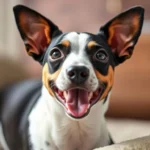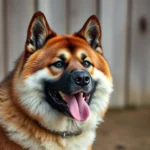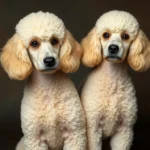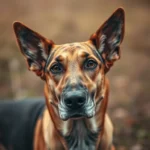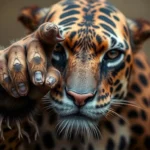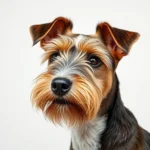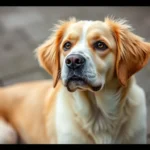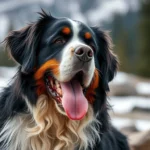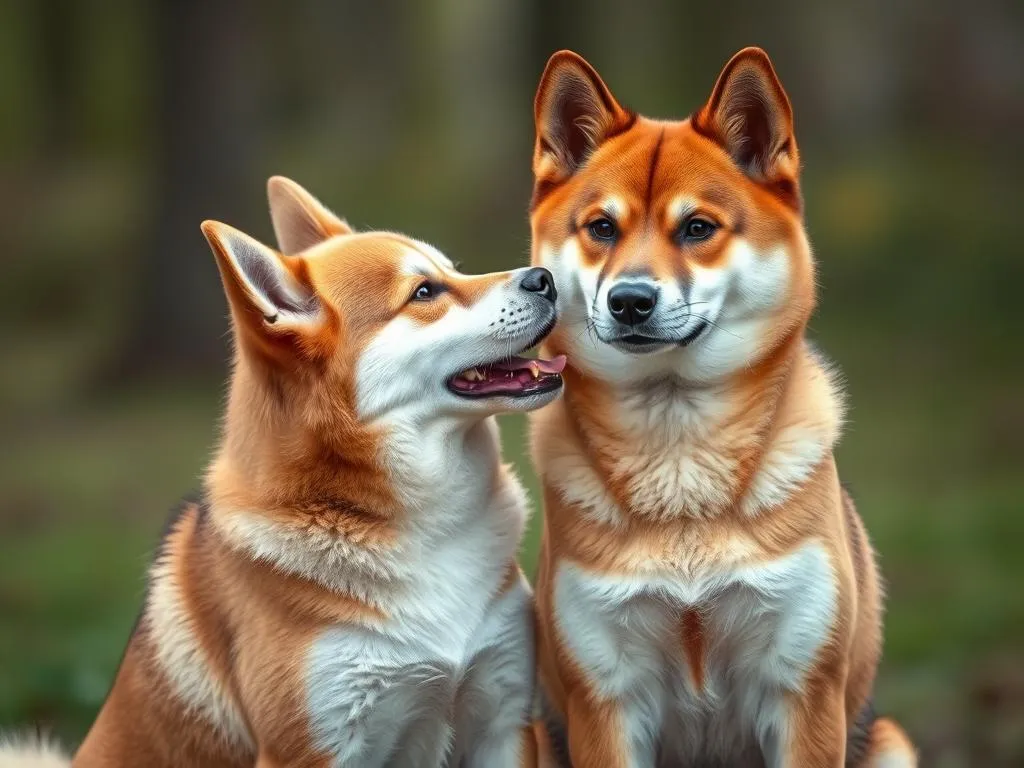
Introduction
The world of dog breeds is vast and diverse, with each breed offering unique characteristics, temperaments, and histories. Among the fascinating breeds hailing from Japan, the Shikoku dog and Shiba Inu stand out not only for their striking appearances but also for their rich heritage. Understanding the differences between these two breeds can help potential dog owners make informed decisions that align with their lifestyles and preferences. In this article, we will delve into a comprehensive comparison of the Shikoku dog vs Shiba Inu, exploring their origins, physical characteristics, temperaments, health considerations, and more.
Breed Origins
Shikoku Dog
The Shikoku dog has a storied history that dates back several centuries. Originating from Shikoku Island in Japan, this breed was primarily developed for hunting game, especially boar. The Shikoku is one of the six native Japanese dog breeds, and its lineage can be traced back to ancient times, specifically to the Jomon period. These dogs were utilized by local hunters for their keen sense of smell and agility, making them essential companions in the rugged terrain of the island.
Shiba Inu
The Shiba Inu is another ancient breed, known for its spirited personality and fox-like appearance. This breed’s history also extends back to Japan, where it was originally bred for hunting small game, such as birds and rabbits. The Shiba Inu is recognized as one of Japan’s oldest breeds, with roots that can be traced to the 3rd century B.C. Like the Shikoku, the Shiba Inu played a significant role in Japanese society, serving both as a hunting companion and a loyal family pet.
Physical Characteristics
Shikoku Dog
In terms of size, the Shikoku dog typically stands between 17 to 20 inches tall and weighs around 35 to 55 pounds. This breed has a well-proportioned body that is both compact and muscular, enabling it to navigate difficult terrains with ease. The coat of a Shikoku is double-layered, featuring a harsh, straight outer coat and a soft undercoat. Color variations include sesame (red with black-tipped hairs), red, black and tan, and cream.
Distinctive features of the Shikoku include its erect ears, which are triangular and slightly rounded at the tips, and its curled tail that rests over the back. These characteristics contribute to the breed’s alert and intelligent expression.
Shiba Inu
The Shiba Inu, on the other hand, is slightly smaller, standing about 13 to 17 inches tall and weighing between 17 to 23 pounds. Like the Shikoku, the Shiba Inu has a double coat, which is dense and plush. Coat colors can vary widely, including red, sesame, black and tan, and cream.
Notable features of the Shiba Inu include its compact and muscular build, small erect ears, and a curled tail that adds to its overall charm. The Shiba Inu’s expression is often described as bold and confident, showcasing its spirited personality.
Temperament and Behavior
Shikoku Dog
The Shikoku dog is known for its loyalty and independence. This breed is often described as reserved yet affectionate with its family members. Shikokus tend to bond closely with their owners and can be protective, making them excellent watchdogs. However, their independent nature means they may not always seek attention, preferring to observe their surroundings.
When it comes to families and children, the Shikoku is generally good-natured and can get along well with kids, especially if socialized early. However, they do require proper socialization to interact positively with other pets and strangers, as they can be wary of unfamiliar faces.
Shiba Inu
In contrast, the Shiba Inu is recognized for its spirited and alert personality. This breed is often described as confident and bold, with a playful demeanor that can be quite entertaining. Shiba Inus are known for their intelligence and curiosity; they can be quite mischievous if not given enough mental stimulation.
When interacting with families and children, Shiba Inus can be affectionate and playful. However, they may not tolerate rough handling from young kids, so supervision is essential. Like the Shikoku, Shiba Inus require socialization to ensure they develop into well-rounded pets. Their cautious nature towards strangers may make them less suitable in homes that frequently entertain guests.
Health and Lifespan
Common Health Issues
Both breeds have their health concerns, although they are generally considered robust.
For the Shikoku dog, common health issues may include hip dysplasia, eye problems, and certain skin conditions. Regular veterinary check-ups and a healthy diet can help mitigate these concerns.
The Shiba Inu is prone to some specific conditions, including hip dysplasia, patellar luxation, and allergies. Responsible breeding practices can reduce the risk of inherited health issues, making it essential to choose a reputable breeder.
Lifespan Comparison
When comparing lifespans, the Shikoku dog generally lives between 12 to 15 years. In contrast, the Shiba Inu tends to have a slightly longer lifespan, averaging around 12 to 16 years. Both breeds benefit from a healthy diet and regular exercise, contributing to their longevity.
Preventative Care
Preventative care is vital for both breeds. Regular veterinary visits, vaccinations, and parasite control are essential for maintaining their health. Additionally, routine dental care and grooming play a crucial role in preventing common health issues.
Exercise and Activity Needs
Shikoku Dog
The Shikoku dog is an active breed that requires regular exercise to maintain its physical and mental well-being. Daily walks, playtime, and mental challenges are essential to keep a Shikoku happy and healthy. It’s recommended to provide at least 60 minutes of exercise each day, which can include activities like fetch, agility training, or hiking.
Shiba Inu
Similarly, the Shiba Inu also has high energy levels and requires regular exercise. Ideally, they need about 30 to 60 minutes of vigorous activity each day. Engaging in activities like leash walks, interactive play, and puzzle games can help satisfy their physical and mental needs. Shiba Inus enjoy outdoor adventures but should also have a safe space to play and explore.
Grooming and Maintenance
Shikoku Dog
The Shikoku dog has a medium-length double coat that requires regular grooming. Brushing should occur at least once a week to remove loose hair and prevent matting. During shedding seasons, more frequent brushing may be necessary. Shikokus are considered average shedders, so owners should be prepared for some hair around the house.
Shiba Inu
The Shiba Inu also has a double coat, which necessitates regular grooming. Weekly brushing is typically sufficient, though more frequent grooming is recommended during shedding seasons. Shiba Inus are known for their shedding, so owners should be ready to manage the fur that comes with this breed. Regular nail trimming and dental care are also important aspects of grooming for both breeds.
Training and Intelligence
Shikoku Dog
The Shikoku dog is intelligent and eager to learn, making training relatively straightforward. However, their independent nature can sometimes lead to stubbornness. Positive reinforcement methods work best, as this breed responds well to rewards and praise. Consistency and patience during training sessions are crucial for success.
Shiba Inu
The Shiba Inu is also highly intelligent, but they can be quite headstrong. They require firm and consistent training methods, as they may test boundaries if they sense any weakness. Positive reinforcement is effective, but trainers should also be prepared for a bit of challenge. Early socialization and obedience training are essential for both breeds to ensure they develop into well-behaved companions.
Ideal Living Conditions
Shikoku Dog
The Shikoku dog thrives in an active household where they have ample space to run and play. A home with a secure yard is ideal, as this breed enjoys outdoor activities. While they can adapt to apartment living, it is essential to provide daily exercise and mental stimulation to keep them happy. Families with children or other pets can be a good match, provided that socialization is prioritized.
Shiba Inu
The Shiba Inu is also adaptable but generally prefers a home with a yard where they can explore and play. They can live in apartments if sufficiently exercised, but they require a commitment to daily walks and playtime. Families with children may find a Shiba Inu to be a great addition, but supervision is vital to ensure interactions remain positive.
Conclusion
In summarizing the comparison between the Shikoku dog vs Shiba Inu, both breeds offer unique attributes that cater to different lifestyles. The Shikoku dog is known for its loyalty and independence, making it an excellent companion for those who appreciate a more reserved dog. In contrast, the Shiba Inu’s spirited and playful nature can bring joy and entertainment to active families.
When choosing between these two breeds, potential dog owners should consider their living circumstances, activity levels, and preferences for dog temperament. Both breeds have their health concerns, exercise requirements, and grooming needs, making it essential to be prepared for the commitment that comes with dog ownership.
Ultimately, whether you choose a Shikoku dog or a Shiba Inu, understanding their unique characteristics will help you create a fulfilling relationship with your new furry friend.
